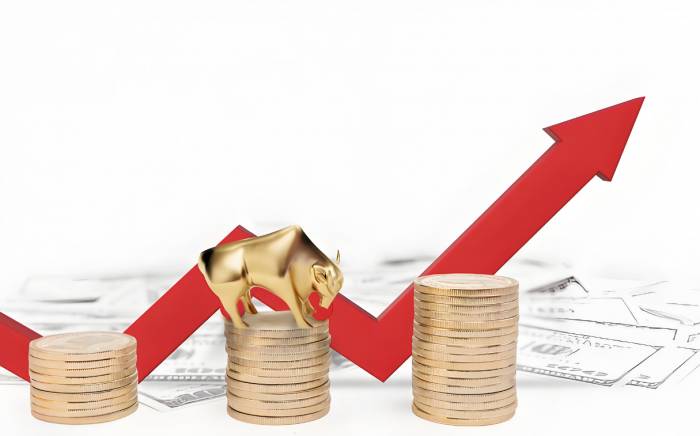Here is the translation of the provided text into English:
In summary, our recent analysis mainly highlights two points:
Firstly, historically, each bottom of the A-share market also marks a bottom in confidence. Only by boosting the market's confidence in the domestic economy will incremental capital enter, typically with sectors related to economic recovery leading the index upward. As the index rises, it creates a profit effect, the market's risk appetite warms up, and then we see the so-called "blue chips setting the stage, growth stocks taking the lead."
Currently, there is no point in aggressively trading technology and thematic stocks. It's not that technology is unimportant, but it does not have a significant short-term economic stimulus effect. Unless there is a high-tech breakthrough that can dramatically increase China's productivity level, making the market feel that demographic issues and debt risks are no longer important, the market's primary focus is on macroeconomic stimulus policies. Moreover, trading on themes often ends up as a zero-sum game, lacking sustainability.
Advertisement
Secondly, regardless of how logically compelling the arguments may be, whether there is a short-term rise depends on incremental capital. Although it's hard to accept, foreign capital indeed has a significant influence on the current A-share market, mainly because there is no incremental capital to offset the outflow of foreign capital. It remains to be seen when the money printed in the past two years will enter the market.
Recently, due to a combination of capital market policies such as reducing stamp duty and real estate policies like "recognizing houses but not loans," confidence in the domestic economy has been somewhat boosted. The yuan has been stable with an appreciation trend, and yesterday, foreign capital purchased nearly 7 billion yuan, driving a significant rise in A-shares. However, today, during the trading session, the US dollar index suddenly strengthened significantly, and the yield on the 10-year US Treasury bonds also broke through 4.22%, causing a depreciation of non-US currencies, including the yuan, with the offshore yuan exchange rate breaking below 7.3, and foreign capital sold off 4.6 billion yuan.
We have looked around and could not find the reason for the dollar's strength. Based on recent data, the US economy appears slightly weak, and the labor market has cooled down, so there is no basis for a significant increase in US Treasury yields. The market should not be overly sensitive to the dollar, but as history shows, there are always black swan events at the end of each rate hike cycle, so it is necessary to maintain a certain level of sensitivity.
Looking at other significant news today:
Yesterday, during the midday trading session, there were reports that the Huawei Mate 60 chip is manufactured by SMIC. The stock of SMIC surged at the end of yesterday's trading, leading to a significant increase in the semiconductor sector in A-shares and Hong Kong stocks. The Huawei concept continued to ferment overnight, and the market surged in the early session today but then dived during the trading session. To be honest, the strength today was average, and the performance was weaker than expected.
Longi Green Energy stated at today's semi-annual performance communication meeting that a large number of products will move towards the BC route in the future. The company's management believes that the BC technology route has matured and is confident that it will gradually replace TOPCon. Over the next 5 to 6 years, BC cells will be the absolute mainstream in crystalline silicon cells.Stimulated by the news, the photovoltaic sector quickly rose, with Aikosolar and Emrise Laser hitting the upper limit, and Longi Green Energy closing up nearly 4%. The new energy sector has been oversold, with the market worrying about oversupply and the difficulty of maintaining growth in performance next year. Once these concerns are proven false, there is a significant room for recovery.

As of the close, the Shanghai Composite Index fell by 0.71%, the ChiNext Index fell by 0.32%, the Hang Seng Index fell by 2.11%, and the Hang Seng Tech Index fell by 2.61%. The turnover of the two markets shrank to 0.8 trillion, with more than 3,500 individual stocks declining. European stocks opened broadly lower, and U.S. stock futures also dived.
Looking at the industry breakdown, only the public utilities, coal, power equipment, and electronics sectors rose, while real estate, media, non-bank finance, communications, and building decoration industries led the decline.
Regarding the real estate sector, we indicated yesterday that the first phase of policy expectation speculation has been realized. After the Politburo meeting, we were firmly optimistic about the real estate sector, knowing that the real estate industry is the core contradiction of the short-term economy. To stabilize growth, real estate policies must be introduced, so speculation can continue until they are introduced. This is attacking the inevitable. However, there is a lot of capital like us speculating on policy, and after the major policy is implemented, these funds will inevitably cash out. This is a characteristic of A-shares, with too many news-driven investors.
At present, the speculative funds should be almost cleared out. Of course, it is not ruled out that new speculative funds will enter, as foreign securities firms are talking about new policies such as relaxing purchase restrictions and urban village renovation. Subsequently, it depends on whether sales will pick up after the policy is introduced. The current position of the real estate sector is still relatively low. If it falls for another two days, it will reach the starting position. No matter how it is cashed out, it is still a good thing, right? Moreover, the leading companies have maintained growth in performance this year, and the logic of industry concentration is still unfolding. The more the market despises a sector, the more it can find stocks with high cost-performance ratios.

Post a comment